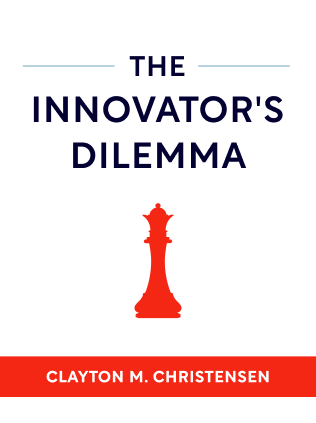

This article is an excerpt from the Shortform summary of "The Innovator's Dilemma" by Clayton M. Christensen. Shortform has the world's best summaries of books you should be reading.
Like this article? Sign up for a free trial here .
What is a market disruptor? How does disrupting markets provide an advantage to innovators?
A market disruptor is an innovation that can shake established industry leaders. The strategy of disrupting markets can help those that pioneer new technologies.
Read more about what a market disruptor is and how it can affect an established company.
What Is a Market Disruptor?
A market disruptor has the potential to upend industries. These kinds of significant innovations—called disruptive innovations—don’t come along very often, but when they do, they change how companies make and market products, the types of customers who buy the products, and how they use the products.
When a market disruptor emerges, dominant, well-run companies often stumble. These companies tend to use the same sound business judgment that has guided them through previous changes, including:
- Listening to what current customers want
- Providing more and improved versions of what customers want
- Investing in projects that promise the highest returns
However, otherwise successful strategies don’t produce the same results when facing innovations that are disrupting markets. This is the innovator’s dilemma: The approaches that lead to success in adopting most innovations lead to failure when confronting disruptive innovations.
This book provides insight for both innovators and established companies’ leaders on how to navigate disruptive innovations. The author takes on two key questions:
- Why do so many successful businesses fail when confronted with disruptive innovations in their industries?
- How can businesses succeed despite the unpredictability of disruptive innovation?
There’s no way to get around the uncertainty of innovation, but you can reduce the uncertainty by understanding the traits of disruptive innovations, effective strategies for adopting them, and how to tell the difference between a disruptive and non-disruptive innovation.
A disruptive innovation represents a dramatically new way of doing things. After it matures, it will have revolutionized an industry and displaced the existing market leaders.
However, at the very beginning, the disruptive innovation looks like a toy, too simple or underpowered for use by the industry’s main customers. It appeals only to a small niche in a small market, and so incumbent companies don’t see it as a big enough opportunity to pursue. Therefore, disruptive innovations usually come from upstarts who aren’t bound by the same requirements for large profits as incumbents.

———End of Preview———
Like what you just read? Read the rest of the world's best summary of Clayton M. Christensen's "The Innovator's Dilemma" at Shortform .
Here's what you'll find in our full The Innovator's Dilemma summary :
- Christensen's famous theory of disruptive innovation
- Why incumbent companies often ignore the disruptive threat, then move too slowly once the threat becomes obvious
- How you can disrupt entire industries yourself






